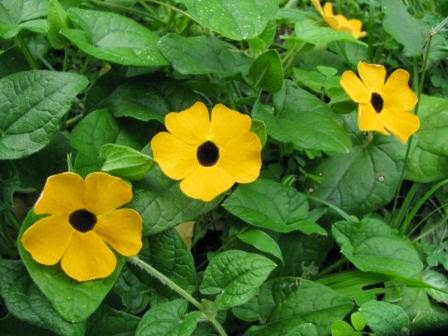I had one of these a few years ago and out of concern that it had not caught any flies I occasionally fed it morsels of minced meat and the occasional mealy worm, which did not seem to do any harm although I suspect my axolotl was not too happy with me feeding the Venus Fly Trap its dinner.
Scientific Name: Dionaea muscipula
Common
names: Venus flytrap (English); (French); S (German); (Spanish);
Taxonomic hierarchy:
Kingdom: Plantae - Plants
Subkingdom: Viridaeplantae – Green plants
Infrakingdom: Streptophyta – Land plants
Division: Tracheophyta – Vascular plants
Subdivision: Spermatophytina –
Spermatophytes (seed plants)
Infradivision: Angiospermae – Angiosperms
(flowering plants)
Class: Magnoliopsida –
Superorder: Caryophyllanae –
Order: Caryophyllales –
Family: Droseraceae –
Genus: Dionaea –
Species: Dionaea muscipula –
Notes:
- I am using the taxonomical classification system used by ITIS (Intergrated Taxonomic Information System). I have decided to use this system in order to avoid confusion as well as because it offers a comprehensive hierarchy from kingdom right through to subspecies whereas other sources only go as far as order or provide the names of some of the higher taxonomical ranks but only indicate "unclassified" rather than providing the rank.
- When and where possible I will endeavour to include alternatives classifications although I may limit this to occasions where an opportunity arises to discuss the reason for the different classifications.
- Taxonomical data used in this post was retrieved [June 15 2014], from the Integrated Taxonomic Information System on-line database, http://www.itis.gov.
On-line sources:
- Royal Horticultural Society: Entry for
- Official Website of the: Bristol University Botanical Gardens
- Missouri Botanical gardens: Entry for
- Integrated Taxonomic Information System on-line database: Entry for
- Seedaholic: Entry for Dionaea muscipula
- Wikipedia: Entry for Venus Flytrap
- Wikipedia: Entry for Dionaea
- Wikipedia: Entry for Droseraceae
- Wikipedia: Entry for
Flora and Fauna - Plants and Critters Blog by Vincent Albert Vermeulen is licensed under a Creative Commons Attribution-NonCommercial-ShareAlike 3.0 Unported License.
Based on a work at http://plantsandcritters.blogspot.be/.
Permissions beyond the scope of this license may be available at http://plantsandcritters.blogspot.be/.
My other blogs
· Flora
and Fauna - Plants and Critters (on plants, animals as well as
gardening, conservation and environmental matters):
http://plantsandcritters.blogspot.com/· The Blood of Souls (language, translation and etymology) : http://thebloodofsouls.blogspot.com/
· Whiskers on Kittens (Life with Kittens and Cats in general) : http://whiskersonkittens-vincent.blogspot.com/









